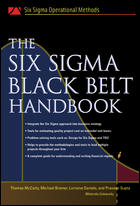Property owners hire many types of contractors—custodians, snow removers, repairmen—and their actions or negligence may cause accidents. Injured parties will likely sue property owners and the contractors. Thus, owners should insist that contractor agreements contain insurance and indemnification provisions.
Owners should insist that before work begins, they receive evidence that contractors purchased adequate insurance coverage. It should cover relevant risks (e.g., physical injuries, property damage) and have sufficiently high limits to cover the cost of defending lawsuits and paying damage awards. Typically, contractors agree to carry general liability insurance and workers’ compensation insurance.
With regard to a third party’s insurance, property owners can be certificate holders or additional insureds. A certificate holder receives a certificate from the insurance company verifying that insurance was purchased. It provides the dates that coverage begins and ends, policy limits, policy number, and type of coverage. The owner will be notified if the policy is canceled. If the owner is named as a co-defendant in a lawsuit, as a certificate holder, the owner will have to defend itself. In contrast, if the owner is an additional insured, the contractor’s insurance will directly cover the owner.
Indemnification is a more comprehensive form of protection. It would be negotiated in addition to insurance. Under an indemnity provision, the contractor agrees to defend the owner in a lawsuit and hold the owner harmless for injuries and damages arising out of the work of the contractor or subcontractors. Indemnification provisions are valuable only to the extent the contractor can fund them through insurance or the contractor’s own resources. Otherwise, the promises are empty.
Carefully investigating and documenting accidents can avoid liability or improve owners’ chances of winning lawsuits. The mere occurrence of an accident does not necessarily mean that the owner or contractor was negligent. For example, if no defective condition exists, but a person is injured due to his own negligence, the owner and contractor would not be liable. To prevail in a lawsuit, an injured party must prove that the owner or contractor knew about a defect that caused the injury or that the defect existed long enough that the defendant should have known about it and fixed the hazard.
Company policy should require the completion of an accident report every time an accident occurs. Company agents should be trained to immediately respond and document accidents with a comprehensive checklist. By acting professionally, they can likely obtain more information about the injury and circumstances under which an accident occurred. If there is no emergency, they should try to ascertain where the person was looking and what happened. They should always offer to call for medical assistance, even though many claimants will decline it.
Accident reports should contain:
- the date and time
- the injured person’s name and contact information
- the lighting and weather conditions
- whether the person used a cane or walker
- the type of shoes the person was wearing
- statements evidencing the injured person’s contributory negligence (e.g., “I wasn’t paying attention”)
- whether the person accepted or refused medical assistance
- a list of claimed injuries
- a list of pre-existing injuries (e.g., the person was
- on crutches)
- whether the area was clean and free of defects
- names of emergency responders (e.g., police, EMTs)
Reports of emergency personnel should be included in the file. The identities of witnesses should be noted, and the owner’s attorney should interview them. If possible, injured parties should read and sign the accident report thereby preventing claims that the owner created a biased report.
Often, there is no defective condition. Photos of the scene could persuade a jury that the owner and contractor fulfilled their duty of care owed to customers. Someone should meticulously identify who took the photos, the date, and time taken.
By negotiating insurance and indemnification provisions, property owners can shift risks to the contractors. Preventative maintenance will reduce the number of accidents. When they occur, meticulous documentation can prevent or defend against meritless lawsuits. All of these measures can reduce risk and improve long term profitability.
Editor’s note: This column does not constitute legal advice.


